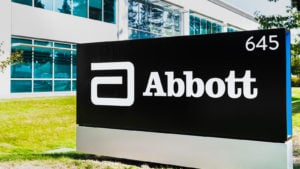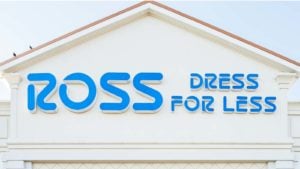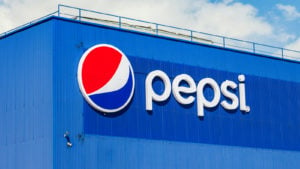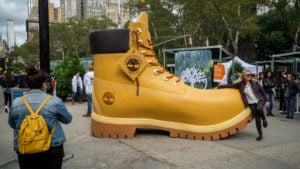There are 65 so-called “dividend aristocrats,” which is the name given to companies that have managed to increase their dividends for 25 consecutive years. But how would an investor choose the best dividend aristocrats for their portfolio?
After all, dividend aristocrats are established companies that are members of the S&P 500 index. That means they’re large, established firms.
And because qualifying as an aristocrat means increasing the company’s dividend for at least 25 consecutive years, the group is limited to those with minimal cyclical exposure. These stocks have enough strength to manage through the dot-com bust and the financial crisis, let alone the novel coronavirus pandemic.
The combination of index inclusion and dividend increases makes dividend aristocrats attractive names. But in looking at the 65 companies, there’s a fairly obvious split. The dividend aristocrats whose shares are cheap seem cheap for good reason.
Exxon Mobil (NYSE:XOM), for instance, is struggling with low crude oil prices. AT&T (NYSE:T) and Walgreens Boots Alliance (NASDAQ:WBA) look like yield traps.
Meanwhile, the most attractive businesses have valuation concerns. I’ve long recommended McCormick (NYSE:MKC,NYSE:MKC.V), one of the few large-cap consumer companies with a demographic tailwind. After all, millennials like more spice than their parents.
Yet MKC stock trades at a whopping 36x forward earnings. The likes of Colgate-Palmolive (NYSE:CL) and Procter & Gamble (NYSE:PG) aren’t quite as expensive, but relative earnings are more expensive than they’ve been in years.
Of course, that same split exists in the market as a whole. The best companies look expensive, and the cheapest stocks look risky.
So as far as dividend aristocrats go, it’s worth trying to split the difference to find the best dividend aristocrats to buy. This list has two cheap names and two expensive ones that look particularly attractive at the moment. They are:
- Abbott Laboratories (NYSE:ABT)
- Ross Stores (NASDAQ:ROST)
- PepsiCo (NASDAQ:PEP)
- V.F. Corporation (NYSE:VFC)
Best Dividend Aristocrats: Abbott Labs (ABT)

Simply put, Abbott Laboratories is one of the world’s great health care companies. The company’s diversified portfolio includes continuous glucose monitoring products, infant nutrition under the Similac brand, testing equipment and medical devices, to name just a few.
It’s been a wonderful business for shareholders. Over the past quarter-century, total returns in ABT stock have cleared 3,000%. (That includes the effect of the 2013 spin-off of AbbVie (NYSE:ABBV). Annualized returns have been an impressive 15%.
It’s likely those returns will slow in the coming decades but they shouldn’t necessarily end. Abbott still has leadership in several key categories. In the U.S., baby boomers should drive demand for years to come. A rising middle class overseas, and better health care, provides additional growth opportunities.
Admittedly, ABT is one of the dividend aristocrats with valuation concerns. The price-earnings multiple has steadily expanded in recent years. At 26x forward earnings, ABT trades at a notable premium to Medtronic (NYSE:MDT), another health care dividend aristocrat I’ve recommended this year.
But Abbott’s positioning in areas like infant nutrition and CGM merit a premium to its medical device rival. And this does seem like the kind of business worth paying up for. Again, investors likely aren’t making 15% a year going forward, but there’s still a path for ABT to outperform the market while providing downside protection if macroeconomic concerns linger.
Ross Stores (ROST)

Ross Stores has been one of the worst-performing dividend aristocrats so far this year, declining over 16%. The weakness makes some sense, as Ross is being pressured from two directions.
Obviously, there are very real demand concerns. The market is pricing in a quick and steep shift to e-commerce that will last beyond this pandemic. The likes of Amazon (NASDAQ:AMZN), Overstock (NASDAQ:OSTK), and Wayfair (NYSE:W) have been among 2020’s best-performing stocks. Ross, meanwhile, relies on in-store traffic that may not return even once normalcy does.
But there are also worries about supply. Struggling apparel manufacturers have cut back production — and may continue to do so going forward. There may not be the same amount, or the same quality, of inventory available to Ross and its off-price peers going forward.
As a result, ROST, despite its hugely impressive history, is not a risk-free investment. But that impressive history isn’t meaningless. Ross and rival TJX Companies (NYSE:TJX) have been two of the greatest retailers of all time.
And with ROST trading at 22x earnings estimates for next year — with those estimates depressed by expectations for lingering pandemic effects — there’s a strong case to bet that Ross will find a way to thrive in the ‘new normal’ as well.
PepsiCo (PEP)

PepsiCo doesn’t get the attention of its larger rival, Coca-Cola (NYSE:KO). But with relatively similar valuations — both stocks trade at about 23x forward earnings — PEP stock looks like the better play going forward.
It’s worth noting that PEP has been the far better stock looking backward. Including dividends, it’s returned 183% over the past decade, against 135% for KO.
Both companies have challenges going forward. Diet soda consumption continues to fall. Obesity concerns are pressuring demand for full-calorie products as well. It’s possible that soft drinks simply aren’t a good business going forward, and that eventually PEP and KO will follow the path of Altria (NYSE:MO), which trades near a multi-year low.
But Pepsi has a weapon that Coke doesn’t — an attractive and growing snack business. That business limits the impact of restaurant closures at the moment and provides added growth potential going forward. An earnings multiple of 23x isn’t a cheap price to pay, but Pepsi’s business looks to be worth it.
VF Corporation (VFC)

Apparel and footwear manufacturer VF Corporation has been one of the biggest victims of the pandemic. VF stock has fallen a whopping 37% so far this year. Revenue in the fiscal first quarter (calendar Q2) declined 48% year-over-year.
As with Ross, however, there’s a case that VF should be able to find a way to manage industry changes. Brands like The North Face, Timberland, and Vans still have tremendous value. In-store traffic will return to at least some extent, and VF should be able to drive higher e-commerce sales as well.
Meanwhile, the VFC stock dividend now clears 3%, and the stock trades at 24x depressed earnings estimates for next year. The market seems to be underestimating the company’s resilience — and the strength of its portfolio.
Vince Martin has covered the financial industry for close to a decade for InvestorPlace.com and other outlets. He has no positions in any securities mentioned.
